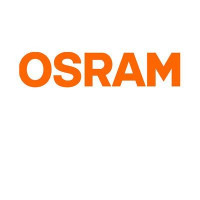-
Philippines
Copyright © 2025 Powered by BCI Media Group Pty Ltd
Confirm Submission
Are you sure want to adding all Products to your Library?
Contact Detail
02 Nov 2020 by Osram

Is the shirt on the shelf really made of 100% cotton? Does the apple in the supermarket only look delicious, or is it spoiled and vitamin deficient? A closer look at the molecular structure provides the answers to these questions. Near-infrared spectroscopy makes that possible. For many years, Osram Opto Semiconductors has been a leader in the development of compact and particularly powerful broadband infrared emitters for spectroscopy. In addition to the broad wavelength range, the energy efficiency of the integrated components is essential to system manufacturers, as are the compact dimensions. Osram’s Oslon P1616 SFH 4737 combines these properties and offers even further benefits for customers. This product will soon make mobile spectroscopy solutions a reality.
The most important aspect of infrared light sources for near-infrared spectroscopy is to cover as broad a wavelength range of emitted light as possible. The larger this range, the more objects that can be analyzed. In order to determine ingredients or water content, the target object is illuminated with infrared light of a wide wavelength range (usually 650 to 1050 nanometer). Parts of this light are reflected, others are absorbed. This ratio varies from object to object, resulting in a unique molecular fingerprint for each item. The reflected light is collected by a special detector. Then, software processes this data, compares it with documented information stored in the cloud and finally, produces the measurement results.
With its extremely compact dimensions of just 1.6mm x 1.6mm x 0.9mm, the Oslon P1616 SFH 4737 from Osram is the world's smallest near-infrared LED (NIRED) for spectroscopy applications available in the market – and is only half the size of the previous smallest product in the Osram portfolio. It is not only its compact design that makes this NIRED ideal for use in smartphones, but also its outstanding output of 74mW at 350mA – which is about three times the peak values of earlier products. The new product is also impressive in terms of the radiant intensity in the forward direction at 18mW/sr – which doubles the values of former Osram NIREDs.
The superb performance of the whole wavelength range offers another unique advantage in spectroscopy. The sensitivity of the often silicon-based detectors decreases with increasing wavelength (especially above 950 nanometer). In order to compensate, higher currents were required in the past. Thanks to a new phosphor, the component emits more light at higher wavelengths – with positive effects on the overall energy consumption of the system.
"With the Oslon P1616 SFH4737, we are once again demonstrating our many years of experience in the infrared range and our outstanding development know-how," explains Carola Diez, Product Manager in the Sensing Division at Osram Opto Semiconductors. "Used in mobile spectroscopy applications, our NIREDs not only help determine the freshness of food, but also identify counterfeit medicines and banknotes. And in agriculture, they are key tool in determining the ideal time to harvest in agriculture".



